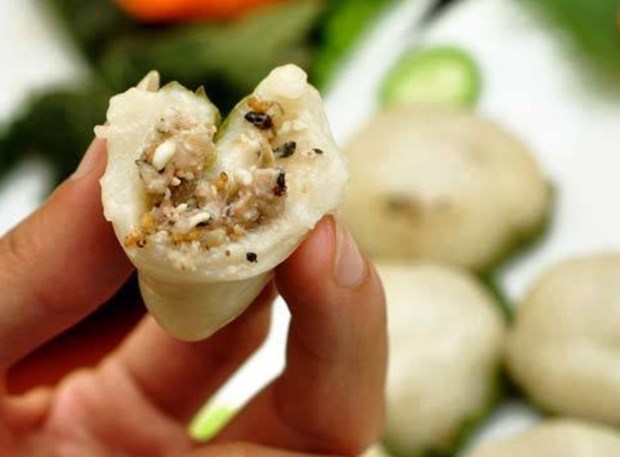If
you come visiting the Northwest in this season, most likely you’ll be
introduced that exotic food of the highlands.
The cost of marriage
Tay
people in Northwest highlands usually tell the story of eggs of ant cake.

Ants’ eggs.
Once
upon a time, there was a family that wanted their daughter to get married. The
Father gave a request that if any man could bring a good special cake, which
could please him, he would let the man get married with his daughter. The rich
men in their area competed each other by plenty of traditional luxury cakes
while a poor guy, who had nothing but his creativeness, went into the forests
with his gully to find something for his imaginative cake. He saw an ant’s nest
dangling on a branch and thought that bee and silkworm pupae were edible, so
should be the ant pupae. He climbed up the tree and chopped the nest down.
Opening up the nest, he saw all milky fleshy pupae in there. The lucky guy
suddenly came up with the idea of using roasted ant pupae and sweet rice to
make a totally new cake. Surprisingly, the Father ignored all sophisticated yet
familiar cakes but praised the eggs of ant cake from the poor guy and the
Father decided to let his daughter get married with this guy. From there on,
Tay minority in the Northwest kept the folk, preparing eggs of ant cakes for
important occasion of the year.

Delicious eggs of ant cake from Northwest highlands.
Tay
people call this cake as Peng-Lăng-Lay, the cake that has main ingredients are
ant’s eggs, sweet rice flour, and Ngoa leaves (a wild type of fig leaves). The
hardest part is to find ant’s nest because you have to go into deep forests,
climb up old trees, or crawl into bushes. This type of ants moves quite fast
and they usually nest on big old trees as mountain pomegranate trees
(Catunaregam spinosa), Ceylon cinnamon (Cinnamomum verum), or bead trees (Melia
azedarach). Their nests are black, rounded or oval shaped, and made from rotten
branches and leaves. The whole thing tightly sticks on strong branches.
Delicious nutrition
of highlands
The
folk say that a good nutritious ants’ nest is the one with a white outer layer
covered the outside leaves. The milky layer is a sign of maturity and amount of
ants’ eggs inside. Depending on the size of the nests, they can collect small
or big amount of eggs and pupae (and they use a regular bowl of rice to
measure). Ants’ eggs are about rice grain’s size with milky color. A perfect
cake should have only ants’ eggs and a bit onion with lard and salt. However,
ants’ eggs are so rare nowadays so people also mix grounded pork, fried onion,
sesame, peanuts, and other spices to salt the cake. They could use wet or dried
sweet rice flour with a pinch of regular rice flour to tenderize the cake. The
dough is kneaded with seasonings till ready. They place Ngoa leaves onto bamboo
trays and coat the leaves with a thick layer of dough. Next, they add fried
ants’ eggs, grounded pork, and smashed roasted sesame on all over the dough
surface; cover ants’ eggs by another dough layer and finish with another Ngoa
leaf. They slightly press the cakes then steam till done.
Ants’
eggs cake should bring different flavors to diners – fat from pupae, chewy from
sweet rice flour, typical smell of forests from Ngoa leaves – and all blend in
to create a special, indescribable yet charming taste.
On
the traditional house-on-stilts of Tay people, among the flickering fire in
holidays and festivals, to have a bite of ants’ eggs cake is to live a
wonderful, exotic, and memorable moment with the Mother Nature.
By Nguyen The
Luong/ SGTT